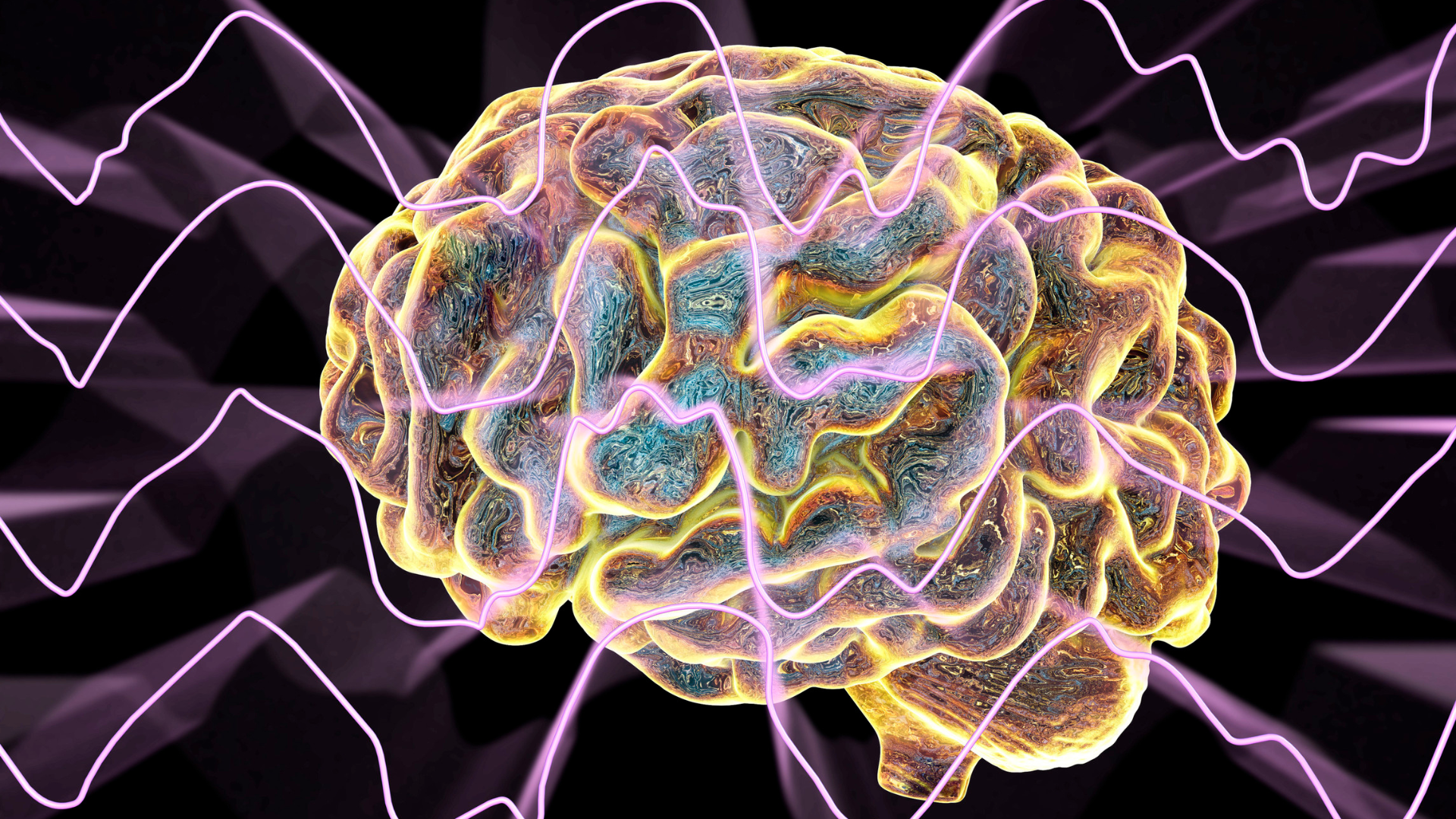Let me tell you something your biology teacher probably didn’t: your brain is designed to hold you back. For decades, we believed the adult brain was rigid—a fixed circuit board of habits and fears. But as a neuropsychologist and founder of MindLabNeuroscience.com, I’ve discovered that neuroplastic momentum—the self-reinforcing cycle of brain change—is your secret weapon to dismantle evolutionary baggage and unlock creativity you never knew existed.
This isn’t just theory. It’s a battle-tested framework combining neuroscience, evolutionary biology, and 24 years of clinical practice. By the end of this article, you’ll understand why your brain clings to fear, how to rewire procrastination into productivity, and why unfinished goals might be your greatest asset. Let’s dive in.

Why Your Brain Is Stuck in Survival Mode (And How to Upgrade It)
Our brains are running on 200,000-year-old software. The amygdala—your inner alarm system—evolved to prioritize survival, not happiness or creativity. When our ancestors heard rustling grass, their amygdala screamed “Saber-toothed tiger!” and triggered a cortisol tsunami. Fast-forward to today, and that same amygdala treats Zoom meetings or inbox notifications like existential threats.
Here’s the problem: chronic stress shrinks the prefrontal cortex—the brain region responsible for decision-making and creativity—while strengthening fear circuits. This creates a vicious cycle: stress → impaired judgment → poor decisions → more stress.
But here’s where neuroplastic momentum changes everything. Every time you respond calmly to stress, you’re not just “managing emotions.” You’re physically rewiring synapses. Think of it like muscle memory: repeat a skill enough times, and your brain automates it. The same applies to courage, focus, and creativity.
Procrastination: How Your Brain’s Survival Instinct Hijacks Productivity
Ever spent hours scrolling TikTok when you should’ve been working? Blame evolution. Procrastination likely began as a survival tactic—our ancestors delayed risky tasks (like exploring unfamiliar terrain) to avoid danger. Today, that same wiring tricks your brain into prioritizing short-term dopamine hits (likes, snacks, cat videos) over long-term goals.
The Neuroscience of Avoidance
- Dopamine Hijacking: Trivial tasks release quick dopamine, reinforcing procrastination.
- Prefrontal Cortex Sabotage: Stress weakens executive function, making it harder to start tasks.
- Limbic System Dominance: The amygdala interprets challenging work as “threats,” triggering avoidance.
Neuroplastic momentum breaks this loop. By practicing “micro-starts”—writing one sentence, doing one push-up—you activate the prefrontal cortex’s goal-setting circuits. Over time, this builds neural pathways that make task initiation effortless.

The Neuroscience of Neuroplastic Momentum: Your Brain’s Hidden Superpower
Neuroplasticity isn’t magic—it’s biology. At the heart of neuroplastic momentum lies long-term potentiation (LTP), the process where repeated neural activity strengthens synaptic connections. Let’s break it down:
Step 1: Glutamate Surge
When you focus on a task (say, learning guitar), neurons fire and release glutamate—a neurotransmitter that acts like a “start signal” for learning.
Step 2: AMPA Activation
Glutamate binds to AMPA receptors, allowing sodium ions to flood the postsynaptic neuron. This primes the cell for action.
Step 3: NMDA Activation
If the signal is strong enough, magnesium blocks pop off NMDA receptors, letting calcium ions rush in. Calcium acts as a “save button,” triggering enzymes that build new AMPA receptors.
Step 4: Structural Rewiring
More AMPA receptors mean stronger connections. Repeat this process, and you’ll literally develop “brain muscles” for skills like resilience or creativity.
Key takeaway: Neuroplastic momentum thrives on repetition. Whether you’re practicing mindfulness or learning Python, consistency physically reshapes your brain.
The Cognitive Momentum Method: Turning Unfinished Goals Into Progress
You’ve likely experienced it—that nagging feeling of an incomplete task hanging over your head. It’s not just a random annoyance; it’s your brain’s way of keeping unresolved goals active in your working memory. In my practice, I’ve developed what I call the Cognitive Momentum Method, a framework that uses this natural mental tension to fuel forward motion and build neuroplastic momentum.
Why Your Brain Fixates on Unfinished Tasks
Your brain is wired to resolve open loops. When you leave something unfinished—whether it’s a half-written email or an unstarted project—it creates cognitive tension, a kind of mental “itch” that demands scratching. While this can lead to anxiety if left unchecked, it’s also an untapped resource for growth. The Cognitive Momentum Method channels this tension into action, using it as a springboard for creativity, focus, and productivity.
Instead of letting unfinished tasks weigh you down, this method reframes them as opportunities to engage your brain’s problem-solving circuits. By strategically breaking tasks into manageable steps and leaving certain elements intentionally unresolved, you can keep your brain engaged and motivated without feeling overwhelmed.

A Patient’s Transformation: From Fearful Speaker to Confident Presenter
Let me share the story of one of my patients who used the Cognitive Momentum Method to overcome debilitating public speaking anxiety—a fear so intense that even introducing himself in meetings triggered physical symptoms like sweating and trembling.
When he first came to me, he described his fear as a “mental wall” he couldn’t climb. The thought of speaking in front of others activated his amygdala—the brain’s fear center—causing him to freeze or avoid situations altogether. But together, we used neuroplastic momentum and the Cognitive Momentum Method to dismantle that wall brick by brick.
Step 1: Micro-Exposure to Build Confidence
We started with micro-exposures—small, low-stakes interactions designed to rewire his fear response. For example, I asked him to speak to one stranger daily: ordering coffee with extra eye contact or asking a store clerk about their day. These micro-exposures strengthened neural pathways in his prefrontal cortex (responsible for rational thinking) while gradually reducing the amygdala’s overreaction.
Step 2: Strategic Task Incompletion
Here’s where the Cognitive Momentum Method came into play. During speech rehearsals, I encouraged him to leave his practice sessions intentionally incomplete—stopping mid-sentence or skipping sections entirely. This created cognitive tension that kept his brain engaged between sessions, allowing him to mentally rehearse solutions subconsciously. By the time he returned to practice, he felt more prepared and less overwhelmed because his brain had been working on resolving those “open loops” in the background.
Step 3: Safety Anchoring for Emotional Stability
Before each presentation, we incorporated safety anchoring techniques: visualizing a calm space (his living room) while holding a smooth stone in his pocket as a tactile reminder of stability. This grounded him emotionally and helped override his fight-or-flight response during high-pressure moments.
The Result
After eight weeks of consistent effort, he delivered a presentation to over 200 colleagues with confidence and ease—a feat he once thought impossible. The Cognitive Momentum Method not only helped him overcome his fear but also rewired his brain for resilience and self-assurance in other areas of life.
How You Can Apply the Cognitive Momentum Method
The beauty of this method is its simplicity and adaptability—you don’t need debilitating anxiety to benefit from it. Here’s how you can use it in your own life:
1. Break Tasks Into Micro-Steps
Instead of tackling an overwhelming goal like “write a book,” start with something small like “write 100 words about one character.” Each micro-step builds momentum without triggering avoidance behaviors.
2. Leave Tasks Intentionally Incomplete
Stop mid-project or leave an idea half-formed before stepping away for the day. This creates cognitive tension that keeps your brain engaged even when you’re not actively working on it, making it easier to pick up where you left off later.
3. Pair Progress With Rewards
Celebrate small wins with dopamine-boosting rewards like taking a walk or enjoying your favorite snack after completing each step. This reinforces positive neural pathways tied to productivity and satisfaction.
4. Visualize Success Daily
Spend two minutes each morning imagining yourself completing your goal successfully—whether it’s delivering a presentation or finishing a creative project. Visualization activates the same neural circuits as actual performance, strengthening your brain’s connection to success.
Why It Works: The Neuroscience Behind Cognitive Momentum
The Cognitive Momentum Method leverages two key principles of neuroplasticity: repetition and emotional engagement. By repeatedly engaging with unfinished tasks in small doses, you strengthen synaptic connections related to focus and problem-solving without overwhelming your brain’s resources.
Leaving tasks incomplete taps into your brain’s natural tendency toward resolution—a phenomenon rooted in working memory processes—and sustains motivation over longer periods of time.
When paired with emotional stabilizers like safety anchoring or visualization, this method creates a balanced approach that rewires fear-based circuits into ones associated with confidence and achievement.

Building Your Neuroplastic Momentum Routine: A Step-by-Step Guide
Step 1: Rewire Fear with “Safety Anchoring”
Fear often feels like an immovable force, but with neuroplastic momentum, you can retrain your brain to respond differently. Safety anchoring is a powerful technique that taps into your brain’s ability to associate sensory experiences with emotional states.
Practice:
Spend 5–10 minutes daily visualizing a safe space that evokes calm and security. This could be a childhood treehouse, a serene beach, or even a favorite chair at home. Close your eyes and immerse yourself in the sensory details: smell the pine needles, feel the warmth of the sun on your skin, hear rustling leaves.
For deeper engagement, add physical grounding techniques like pressing your feet firmly into the floor or elongating your spine. These tactile sensations reinforce the mental imagery, helping your brain associate physical stability with emotional calmness.
Science:
This practice strengthens connections between your prefrontal cortex (rational brain) and amygdala (fear center). Over time, these connections dilute fear responses and promote resilience. Think of it as building a neural “bridge” that allows rational thought to override panic signals.
Step 2: Crush Procrastination with the 2-Minute Rule
Procrastination is often rooted in overwhelm—your brain perceives large tasks as insurmountable, triggering avoidance behaviors. The 2-minute rule is a deceptively simple yet highly effective strategy for overcoming this mental block using neuroplastic momentum.
Practice:
Commit to just 2 minutes of starting a dreaded task. For example: write one sentence of an essay, organize one folder on your desktop, or stretch for two minutes before exercising. The goal isn’t perfection—it’s initiation.
Once you begin, momentum often carries you forward naturally. If not, no problem—you’ve still made progress. Repeat this daily until task initiation becomes second nature.
Science:
Starting activates dopamine circuits in the brain’s reward system, creating a positive feedback loop that reduces avoidance behaviors over time. Additionally, small wins strengthen neural pathways in the prefrontal cortex responsible for task management and focus.
Step 3: Amplify Creativity Through “Divergent Play”
Creativity thrives when we break free from rigid thought patterns and explore new ideas without judgment. Divergent play is an essential tool for fostering innovation through neuroplastic momentum.
Practice:
Dedicate 20 minutes daily to unstructured creative activities like doodling, freestyle writing, or building LEGO towers. The key is to avoid setting goals—let exploration guide you instead of outcomes. For added stimulation, try collaborative games like finishing someone else’s drawing or creating random object stories.
Science:
Divergent play stimulates the default mode network (DMN), a brain region responsible for connecting disparate ideas and generating innovative solutions. It also deactivates the prefrontal cortex temporarily, allowing freer thought processes to emerge without self-censorship.
Step 4: Leverage “Synaptic Priming”
Priming prepares your brain for learning and memory consolidation by enhancing neural activity before engaging in tasks—a critical component of building neuroplastic momentum.
Practice:
Review new material (e.g., vocabulary from a foreign language) right before sleep or during quiet moments when your mind is most receptive. Pair this with visualization techniques or physical movements related to the material for deeper encoding.
Science:
Sleep spindles during REM consolidate neural connections formed throughout the day. Synaptic priming ensures these connections are strong by engaging them beforehand through repetition and intentional focus.
Your 7-Day Neuroplastic Momentum Challenge
Day 1–2: Apply the 2-Minute Rule to your most avoided task.
Day 3–4: Add 5 minutes of Safety Anchoring each morning.
Day 5–6: Schedule Divergent Play—create something intentionally “bad.”
Day 7: Chunk a goal into 3 micro-tasks using the Ziegler Effect.
The Future of Neuroplastic Momentum: Where Neuroscience Meets Human Potential
We’re entering a golden age of brain optimization. Tools like fMRI and AI are decoding neuroplasticity in ways Hippocrates couldn’t imagine. But here’s the truth: neuroplastic momentum isn’t about tech hacks or biohacking shortcuts. It’s about honoring your brain’s ancient wiring while gently nudging it toward growth.
AI and Personalized Brain Training
Emerging apps now use machine learning to tailor neuroplastic exercises to your unique neural patterns. Imagine a program that identifies your amygdala’s stress triggers and designs micro-exposures to rewire them—all while you sleep.
The Rise of Neuroplastic Communities
Online platforms are creating spaces where people share neuroplastic momentum routines, celebrate micro-wins, and crowdsource creative solutions. These communities prove that collective effort amplifies individual brain change.
Ethical Considerations
With great power comes responsibility. As we unlock neuroplastic momentum, we must guard against misuse—like corporations exploiting neural hacks for productivity at the cost of mental health.

Your Brain’s Next Chapter Starts Now
Neuroplastic momentum isn’t just a trend—it’s a revolution in how we understand and harness human potential. It’s the science of change, the art of adaptation, and the key to unlocking parts of yourself you may have thought were set in stone.
Think about it: our ancestors didn’t survive by staying stagnant. They thrived because they adapted—learning to navigate new environments, solve problems creatively, and overcome fear-driven instincts. The same evolutionary adaptability that kept them alive is embedded in your brain today. But here’s the twist: you no longer have to adapt to your environment. With neuroplastic momentum, you can shape your environment—and your mind—to work for you.
Imagine rewiring fear into courage, transforming procrastination into flow, and turning creative blocks into breakthroughs. Picture yourself stepping into challenges with confidence, knowing that every small action is reinforcing neural pathways that lead to resilience and growth. This isn’t self-help fluff; it’s neuroscience in action.
The Power of Small Wins
The beauty of neuroplastic momentum is that it doesn’t demand perfection or massive leaps forward. It thrives on small, consistent actions: a single mindful breath when stress hits, two minutes of starting a task you’ve been avoiding, or 20 minutes of unstructured play to spark creativity. These micro-actions may seem insignificant in isolation, but together, they create a domino effect that reshapes your brain—and your life.
Every time you choose to act differently—whether it’s calming your mind during a stressful moment or taking the first step on a daunting project—you’re sending a powerful message to your brain: This is who I am becoming. Over time, these choices compound, creating new neural circuits that make growth feel natural and automatic.
A Lifelong Journey of Growth
It’s important to remember that neuroplastic momentum isn’t a one-time fix or a quick hack. It’s a lifelong journey—a commitment to becoming the best version of yourself through intentional effort and self-awareness. Some days will feel easier than others; some challenges will test your patience. But with each step forward, you’re building mental muscles that will serve you for years to come.
This journey isn’t just about overcoming fear or procrastination—it’s about rediscovering the limitless potential within you. It’s about realizing that no matter where you are right now or what obstacles lie ahead, your brain is capable of change. And when your brain changes, so does everything else.
The Ripple Effect of Change
Here’s something incredible about neuroplastic momentum: its impact doesn’t stop with you. When you rewire your brain for resilience, creativity, and focus, those changes ripple out into your relationships, career, and community. You become a source of inspiration—a living example of what’s possible when we embrace our capacity for growth.
Think about how your newfound courage could inspire a friend struggling with self-doubt or how your creative breakthroughs could spark innovation in your workplace. The work you do on yourself has the power to create positive change far beyond your own life.
What Will You Rewire Today?
As you finish reading this article, take a moment to reflect: What’s one small action you can take today to build neuroplastic momentum? Maybe it’s practicing safety anchoring during a stressful situation or committing two minutes to start that project you’ve been avoiding. Whatever it is, know that even the smallest step forward is enough to set powerful changes in motion.
The trail is marked. The tools are in your hands. Your brain is ready—and so are you. Let’s begin this journey together.

FAQs: Your Neuroplastic Momentum Roadmap
Can older adults build neuroplastic momentum?
Absolutely! Neuroplasticity doesn’t diminish with age—it adapts based on consistent practice. Seniors learning new skills like Mandarin have shown synaptic density comparable to younger adults.
Does diet affect neuroplasticity?
Yes! Omega-3 fatty acids found in foods like salmon and walnuts boost BDNF (brain-derived neurotrophic factor), which supports synaptic growth essential for neuroplastic momentum.
How does sleep impact momentum?
During sleep, glial cells prune weak synapses and strengthen important ones. Aim for 7–8 hours nightly to consolidate learning and sustain neuroplastic momentum.
Can meditation accelerate results?
Yes! Mindfulness increases gray matter in the prefrontal cortex within eight weeks while weakening fear responses in the amygdala—a key driver of neuroplastic momentum.
What’s the biggest mistake people make?
Overcomplicating it! Neuroplastic momentum thrives on small, consistent efforts—not grand gestures or sporadic attempts at change.
#NeuroplasticMomentum #BrainRewiring #Neuroplasticity #PersonalGrowth #MindsetShift #OvercomingFear #ProcrastinationSolutions #CreativeBreakthroughs #MentalResilience #BrainAdaptability #EmotionalWellness #MindfulnessPractice #CognitiveMomentumMethod #SelfImprovementJourney #UnlockPotential



